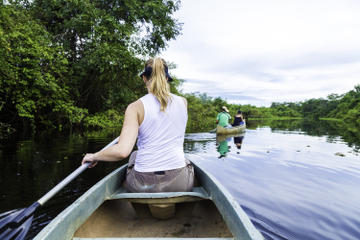Amazon Rainforest
TIME : 2016/2/22 10:00:26

Amazon Rainforest
Trying to fathom the Amazon’s size is a lesson in mental futility. You can read all the Amazon stats that you want—like the fact that the Amazon has more acres of land than China or India have people, or that 20% of the world’s oxygen is produced from the Amazon’s trees—but until you float down the Rio Negro and stare at the sea of green, or look out the window on a flight to Manaus at the endless landscape of trees, stats and figures about the mighty Amazon are only numbers on a page.
That all changes when you first catch sight of the Amazon’s muddy waters and realize how much of this liquid snake there really is to see. There are forests that teem with native wildlife and canopies alive in birdsong, and remote areas where indigenous tribes have yet to even be found. Granted, nearly all recreational visitors to the Amazon will stay pretty close to Manaus, where the chance of seeing jaguars and lost tribes is admittedly pretty slim. Nevertheless, there’s still a raw, quasi-developed sense of touristic infancy, where visitors can feel the indigenous influence simply by walking around town. Take a guided trek into the fringes of a forest that squawks and rustles with life, or board the deck of a river cruise to watch the waters of the Rio Negro converge with the muddy brown Amazon. If staying in Manaus, return at night to a comfortable city with hints of European splendor—knowing that despite the immediate comforts, hundreds of miles of untamed jungle surround you on every side.
Practical Info
Manaus is approximately 4 hours by plane from Rio de Janeiro and Sao Paolo, or a five day cruise up the Amazon River from the port of Belém on the coast.
